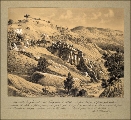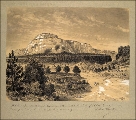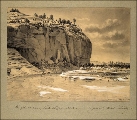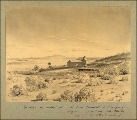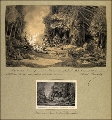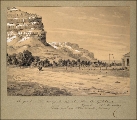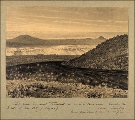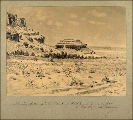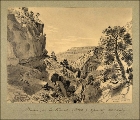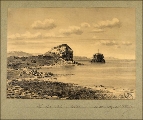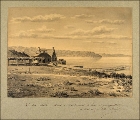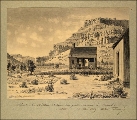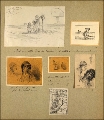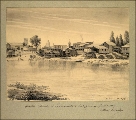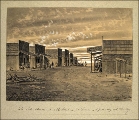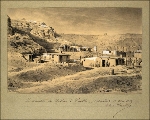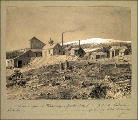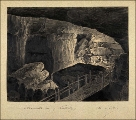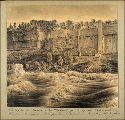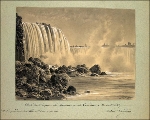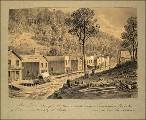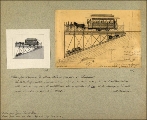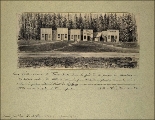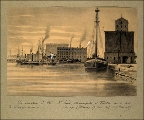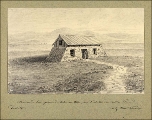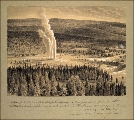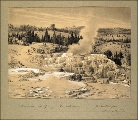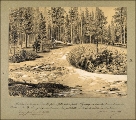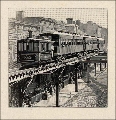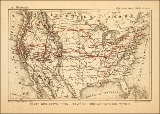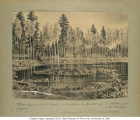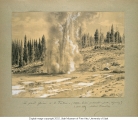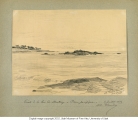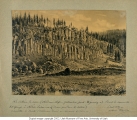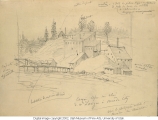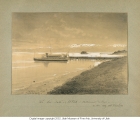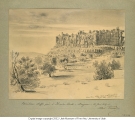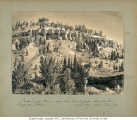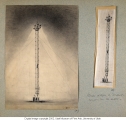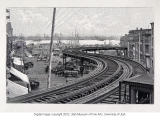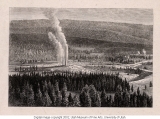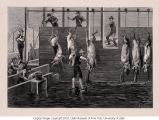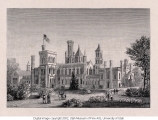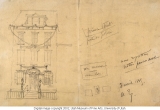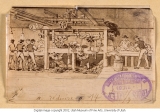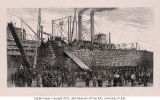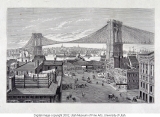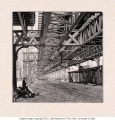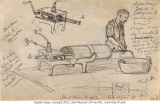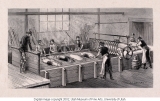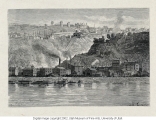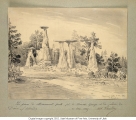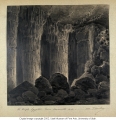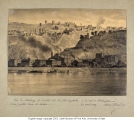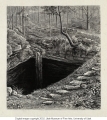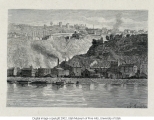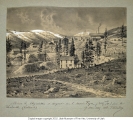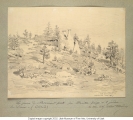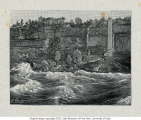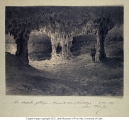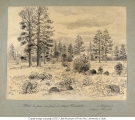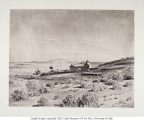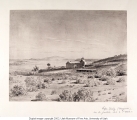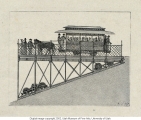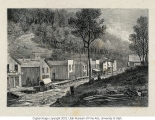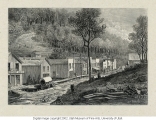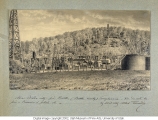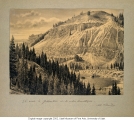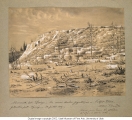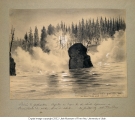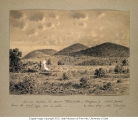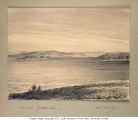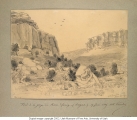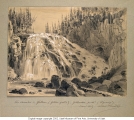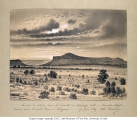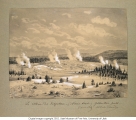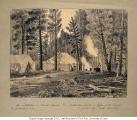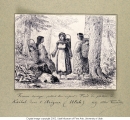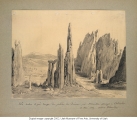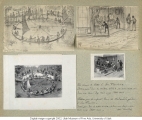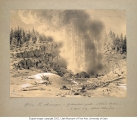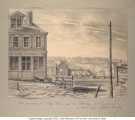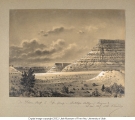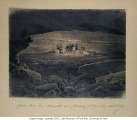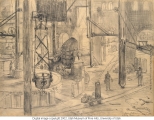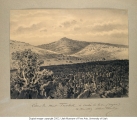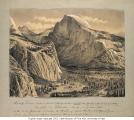| Identifier |
1978_303a_mcBridCity.jpg |
| Title |
MacBride City near Butler (Butler County), Pennsylvania - View of the main street |
| Alternate Title |
Mac Bride city près Butler (Butler county) Pensylvanie - Vue de la grande rue |
| Artist's Notation |
"Dessin paru dans La Nature" |
| Creator |
Tissandier, Albert 1839-1906 |
| Subject |
Cities & towns--Pennsylvania--McBride--1880-1890; Wooden buildings--Pennsylvania--McBride--1880-1890; Wooden sidewalks--Pennsylvania--McBride--1880-1890; Oil well drilling rigs--Pennsylvania--McBride--1880-1890; Cityscape drawings--1880-1890 |
| Published Location |
This image, engraved by E. A. Tilly, was published in La Nature, no 658 (9 Jan 1886), as figure 2 (p. 85), to accompany the third installment of Albert Tissandier's "Lettres d'Amérique", with the caption "Une ville naissante aux États-Unis : Mac Bride City, en Pensylvanie. (D'après nature, par M. Albert Tissandier.)" http://cnum.cnam.fr/CGI/fpage.cgi?4KY28.26/89/100/432/0/0 The same image appears as figure 12 (p. [37]), engraved by E. A. Tilly, in Albert Tissandier's book Six mois aux États-Unis : voyage d'un touriste dans l'Amérique du nord suivi d'une excursion à Panama (Paris : G. Masson, [1886]), with the caption "La grande rue de Mac-Bride City (d'après nature)". Associated text (p. 35-36): "Les grandes villes n'emploient point pour l'éclairage le gaz naturel, à cause de sa qualité très inférieure au gaz de houille; mais, en revanche, il est fort employé dans les petites localités. C'est ainsi que la nouvelle cité de Mac-Bride, située au milieu des bois de Butler County, a pu être éclairée. Mac-Bride avait quatre mois d'existence lorsque j'y fus, en avril 1885. Elle possédait déjà 1000 habitants environ. Un des propriétaires de puits, M. Campbell, a bien voulu me conduire à ce curieux endroit, situé à 6 milles de distance de Butler. Le pays est charmant: partout des coteaux boisés, de beaux arbres, des cours d'eaux; mais il est difficile de se faire idée des chemins horribles qu'il faut prendre. Les chevaux ont souvent de la boue jusqu'au ventre; ils se tirent à grand'peine de ces vilains passages. Quant à nous, ce sont des éclaboussures sans fin que nous envoient les roues de notre buggy, et des cahots à vous faire sauter à tous moments hors de cette petite voiture à deux places, merveille d'élasticité et de légèreté. Quand M. Campbell m'a demandé si nos routes, en France, étaient mieux entretenues que celles de son pays, je n'ai pu m'empêcher de rire en lui montrant notre figure mouchetée d'éclaboussures, mélange d'huile, de pluie et de sable. Je ne suis pas sûr cependant qu'il m'ait cru sur parole quand je lui ai raconté que nos chemins étaient propres, unis comme un parquet et admirablement entretenus. Nous arrivons, et je vois la grande rue de la ville avec ses maisons de bois. Mac-Bride a un bureau télégraphique et postal. Elle possède quelques boutiques, un bureau de tabac, un hôtel, un skating rink pour les jeunes gens, enfin une école et un trottoir de planches le long des maisons pour éviter de patauger dans la boue (fig. 12): tout cela terminé en quatre mois, c'est à peine croyable. Ces régions de Butler county étaient connues depuis vingt-cinq ans environ, époque où l'on cherchait le pétrole, mais les fouilles avaient été mal conduites sans doute et ces lieux étaient restés non exploités. Depuis quelque temps, de nouvelles fouilles ont été faites et ont donné de beaux résultats. De là la création immédiate de cette nouvelle cité à laquelle on a donné le nom d'un des principaux propriétaires de puits à pétrole de l'endroit." Reproduced in the exhibition catalog, Albert Tissandier : Drawings of nature and industry in the United States, 1885, by Mary F. Francey ([Salt Lake City, UT] : Utah Museum of Fine Arts, 2001), p. 23. |
| Related Image |
For two versions of the engraving done by E. A. Tilly from this drawing see http://content.lib.utah.edu/cgi-bin/docviewer.exe?CISOROOT=/UMFA&CISOPTR=209&CISOSHOW=146 and http://content.lib.utah.edu/cgi-bin/docviewer.exe?CISOROOT=/UMFA&CISOPTR=209&CISOSHOW=145 |
| Short Essay |
When Tissandier's journey took him to Pittsburgh in April 1885, he visited the small city of MacBride, only four months old at that time, but already claiming a population of one thousand. Founded specifically as the center of a large number of oil and natural gas wells, it was located in a remote wooded area of Butler County. MacBride consisted entirely of small wooden houses, a telegraph and post office, a tobacconist, hotel, school and a skating rink. A sidewalk of planks along the front of the houses allowed pedestrians to avoid having to walk through muddy streets. Tissandier was, as always, interested in the industry that characterized a particular region. His journal entry described the two hundred petroleum wells, and noted that a typical daily yield of 700 barrels of oil sold for seventy-eight cents a barrel. This required placement of large vats close to the wells to direct the flow of oil to large reservoirs from which the oil was transported to such cities as Cleveland, Buffalo and Pittsburgh. Energy for the steam engines that operated the pumps for the wells was obtained by the natural gas in the region that was discovered at the same time as oil. Natural gas also powered many of the factories around Pittsburgh. The drawing reproduced here is a clear visual description of Tissandier's reaction to the small city that grew so rapidly in response to the discovery of abundant natural resources. His observations are recorded in his journal: "As we arrived I saw the main street of the city with its wooden houses. These regions of Butler County have been settled for about 25 years, the time during which these people have been looking for petroleum ... Recent new excavations have yielded better results, leading to the immediate creation of this new city that is named for one of the owners of petroleum wells in this location. One sees a large quantity of scaffoldings in the form of towers around MacBride. These are petroleum wells, about 82 feet high and in full operation. During the month of March 1885, nearby Thorn Creek yielded 7,329 barrels. On a good day an unusual yield of 700 is pumped." |
| Publisher |
Utah Museum of Fine Arts |
| Date |
1885-04-24 |
| Type |
Image |
| Format |
application/pdf |
| Source |
Albert Tissandier: Drawings of Nature and Industry in the United States |
| Language |
fra |
| Rights Management |
Digital image c2001 Utah Museum of Fine Arts, University of Utah |
| Source Physical Dimensions |
33.02 cm High x 40.64 cm Wide |
| Source Characteristics |
Graphite and brush applied ink on paper |
| Light Source |
Kaiser Softlite ProVision 6x55W flourescent 5400K daylight |
| Archival Resolution |
TIFF: 5033 x 4226 pixels |
| Display Resolution |
JPEG: 900 x 738 pixels |
| Bit Depth |
36-bit color |
| Scanning Device |
Leica S1 Pro scanning camera; Hasselblad CFi 50mm F/4 lens; f/11 |
| Exhibit Catalog |
ISBN: 0-9657215-0-7; Library of Congress Catalog Number: 2001094211 |
| Setname |
uu_umfa_at |
| ID |
415823 |
| Reference URL |
https://collections.lib.utah.edu/ark:/87278/s6bk1cds/415823 |

